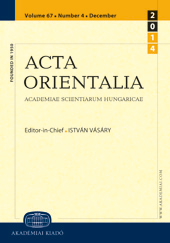Offenders, Sinners and Criminals: The Consumption of Forbidden Food
Offenders, Sinners and Criminals: The Consumption of Forbidden Food
Author(s): Ann Heirman, Tom De RauwSubject(s): History, Anthropology, Cultural history, Comparative Studies of Religion, Sociology of Culture, Social Norms / Social Control, History of Religion
Published by: Akadémiai Kiadó
Keywords: Chinese monastic Buddhism;
Summary/Abstract: One of the most distinguishing features of a Chinesemonk and nun is therefusal to eat or drink certain types of food: it is forbidden to drink alcohol, to eat meat or fish, or to consume five products that have a strong flavour. This was not merely a matter of monastic code. Under the influence of Mahāyāna, with its strong emphasis on compassion, the monastic discipline was subjected to an increased moralisation. At the same time, we see how the secular authorities interfered with the monastic discipline on an increasing scale, until they finally even took it upon them to enforce these monastic rules by including them into the secular law codex. The Daoseng ge, Regulations for the Daoist and Buddhist Clergy, included in the civil Tang code issued in 637 by Emperor Taizong, is a prime example. Based on disciplinary (vinaya) texts, Chinese commentaries written by vinayamasters, and historical accounts, the present paper studies thedevelopment of disciplinary rules on forbidden food in the Buddhist monastic community. At the beginning, a wrong-doer was a mere offender of the monastic code. He gradually became a sinner, and finally also a state criminal (at least in theory).
Journal: Acta Orientalia Academiae Scientiarum Hungaricae
- Issue Year: 59/2006
- Issue No: 1
- Page Range: 57-83
- Page Count: 27
- Language: English
- Content File-PDF

